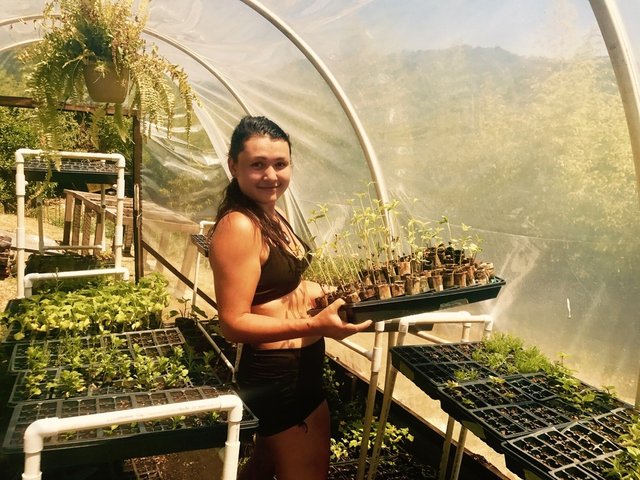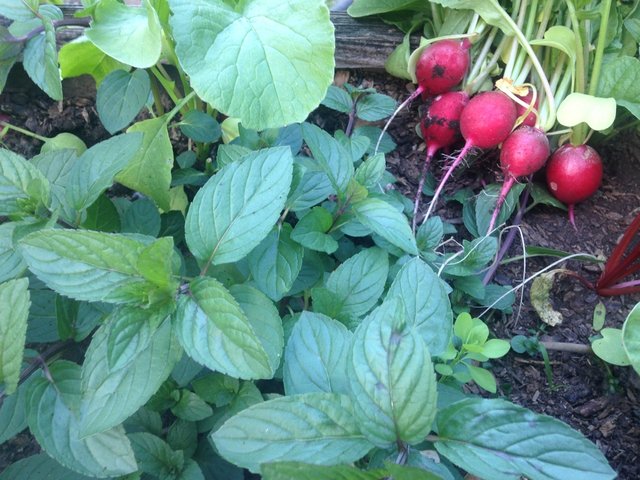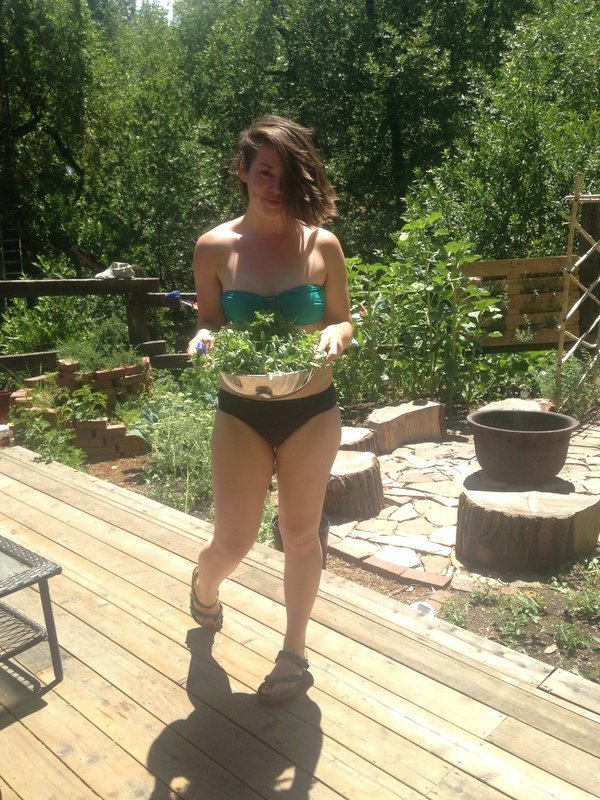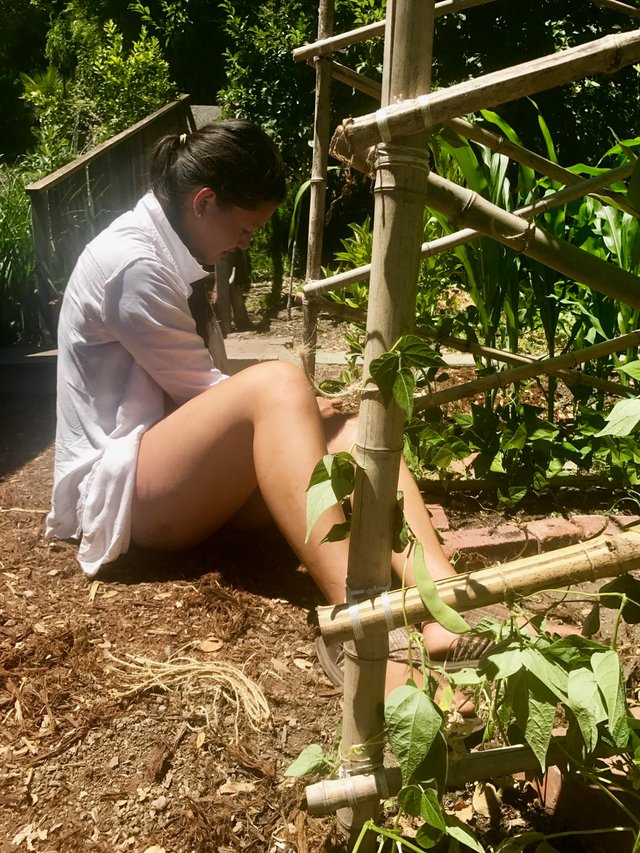Permaculture, Homesteading, and Community Building // Business Planning and Starting a Farm
Hi everyone! I recently attended an Entrepreneurial Intensive for Farmers hosted by the Farmers Guild. It was a very intense 2 days of business planning, food safety regulations, sales, and marketing information. It was hosted in Humbolt, in the very North section of California. I drove up by myself and had the most relaxing, beautiful drive through the "Avenue of the Giants", which is a scenic highway running through Humboldt Redwoods State Park.
The first session of the intensive was "Business Planning and Starting a Farm" with Alan Haight. Alan Haight is the founder of River Hill Farm, which is a successful farm that was started in 2001 in Nevada City. I want to share with you the wonderful knowledge that Alan shared with us. He opened by saying a statement that stuck with me: "Farmers are the mediators of the relationship between land and humans." and "The failure of a farm is the failure and huge loss to a community".

- If vegetable production is not possible (due to water, food safety issues, ect), you can plant cut and grow flowers, medicinal herbs, and fruit trees for market.
- If you want to do more than grow and sell veggies (ex having farm community days, having an educational component to your farm), you still need to grow and sell veggies! Other projects have a potential to become a distraction and take too much of your time and energy.
- You need to match market needs with the type of crop and amount grown.
- Alan typically hires one person per acre to work full time.
- A variety of shapes and colors of produce is key for a farmers market stand, since the visual variety catches peoples' eye and draws them in.
- Always be asking yourself - what crops are a black hole for labor time? Ex) strawberries take a lot of time to pick so it may be draining money and time out if you choose to have a strawberry farm. The solution? Only grow and sell these crops if you do a "pick-yourself" model.
- Send out a monthly newsletter and include unique recipes for the crops you are currently growing.

- To CSA or not to CSA? Alan is anti-CSA. He stated that a CSA requires you to grow about 70 crops per season to retain customers. This is a lot of crop planning and effort to make sure everything is coordinated. Instead, you can do a "build-your-own" CSA box at your farm stand or farmers market.
- Alan started a system of "Friend of the Farm Card". It is like a CSA in that you prepay for the entire season in order to support the farmer. However, it is not a CSA since you don't have weekly deliveries or pickups of a box of produce. Instead, you buy a farm card which acts as a debit card. You start with a certain balance for the season (ex $250) and can use the card when you go to the farmers market stand. Why would someone by a farm card? On his website, Alan describes the community support aspect of buying a farm card:
"By purchasing your Farm Card, you will be providing us the early season capital and support that is essential to our survival as a small, family farm. Each year, we spend more than half of our annual farm expenses between January and June at a time when, because of our local climate, we have little or nothing to sell. Your purchase of a farm card provides our farm with the capital necessary to get everything done so that we have a full assortment of produce by the time of the first markets in June." Source

- To find workers for your farm, you can post on various websites that have a job board specifically for farms. A few of them include goodfoodjobs.com, tufts university, ecofarm.com, farmersguild.com
- Have a spreadsheet to provide restaurants to show them your harvest dates for specific crops, so that they know what they can order and when
- Have a planting excel sheet for all of your crops - include whether the crops were direct sow, tray sow, quantity, sow dates, harvest dates, and any other additional notes
- There are different ideal tray sizes per crop. In general you want to use a 1020 tray, and then fill the 1020 tray with certain sized cells. The average size cells inserts are 72 cells per 1020 tray. Certain crops can go smaller. For example, Alan uses 200 cell inserts in a 1020 tray for his basil transplants.

- Have an excel seed log that includes supplier, date, amount, and type
- Have an excel fertility log that includes type of fertilizer applied, date applied, where, and rate of application
- Test your soil in the spring to take into account the nitrogen of cover crop
- Have a "harvest list" template - know the quantity of crop you need per market outlet so that you know how much you have to harvest of that crop the day before
- On Alan's farm, the harvester is also usually the packer of that specific produce. He prefers to give people autonomy over their job by diversifying their workload and giving them a "whole process" job.
- After going to market, take notes of what actually sold to re-evalute the "harvest list" template for the next week.
- Get an accounting system. Alan recommended Xero.
- Have a "sales" excel sheet. Include the crop, price per pound or bundle, amount sold, and total revenue. The price per pound may vary depending on who you sell to. For example, you may sell your tomatoes for $x cheaper per pound when selling large quantities to restaurants than when selling to individuals at farmers markets.
- Keep all of your receipts and keep an excel sheet of your income and expenses for future reasons of budget and taxes
- Plant cut and grow veggies (like lettuce mixes) if you want to maximize the output of every squarefoot of your farm.

Very interesting, lot of details and informations, thanks for sharing, i've learn a lot.
Thanks so much @damarth!
we started one at Umass Amherst. a lot of work to get going. Is it self sustaining or what?
It's a ton of work to set up the system, but I've been designing it to be a self-sustaining as possible so hopefully it'll require much less work to maintain it in the future!
What a wealth of information here in this blog. I don't seek to be a farmer or someone who will sell vegetables and herbs but I do want to have my own garden for some tomatoes, squash, potatoes, just to eat for myself. These tips are still helpful to me about testing the soil and what not too. Another thing I want to have is a hen house for chickens to lay eggs for me.
I'm so happy to hear this! I hope you get chickens soon :-) I've loved having chickens, and we recently got a couple of ducks as well. I grow comfrey as supplementary feed for my chickens, which is an all around wonder plant.
This looks like a really great setup and it isn't too hot out in Cali. My friend has a greenhouse very similar to yours here in Tucson and even with a swamp cooler to try to cool it there is no way anything can survive because it has been 110+ degrees out here. It is brutal. :-(
It can be very hot in many parts of Cali. It was 108 in the Sacramento Valley today. I don't think a greenhouse is meant for summer, only cold weather growing. But like I said, I think, could be wrong.
I think greenhouses are mostly to extend the growing season by making it warmer, but depending on the cover color, material, and design they can accomplish other things like light and moisture management. California weather is always surprising me. I live in the Bay Area and a drive of 15 miles can shift the temperature 20-30 degrees!
Ok yeah, extend the growing season. Maybe in the summer open it up and put some shade cloth on it for plants that don't like so much direct sunlight.
I lived in Napa for a while years ago and commuted to Vallejo. When we first moved there, being from the Sacramento area, I'd get up for work, see a nice sunny morning and think oh, a beautiful day. Then I'd drive to work, and it was cold and overcast and it didn't burn off until about noon. I learned to keep a light jacket in the car.
wrote a lil post on Greenhouses. I think it depends on what you want to grow and if you are in California, you can use a greenhouse to grow even warmer climate plants. The big one in Golden gate Park comes to mind... most of those plants wouldn't survive without a greenhouse. but I guess it depends on what you want to grow, your micro-climate and your needs... anyway, here is the article if anyone is interested: https://steemit.com/homesteading/@ecoknowme/dream-greenhouse-what-s-your-style-long-term-solutions-for-homesteaders-permaculturists-and-plant-lovers
I looked at your post and responded to it there. It's a good one!
Awesome conversation! Yes - it'll definitely get too hot in parts of California to use a greenhouse in the summer. I saw a friend use hers as an herb drying area - she emptied out the entire greenhouse, put wire racks on her shelves, and added some shade cloth.
What a great idea. Do you think that would also work to dry fruits?
You fascinated me so much. I'm waiting for a more comprehensive guide. Maybe a video blog? :)
That's a cool idea! I'll try to play around with videos :-)
Informative post! I'm sure this intensive class was a blast...really nice right up about what you learned, this is very detailed and contains valuable advice for anyone wanting to produce food crops for market
Thanks so much @iamblake! The intensive was a blast :-)
Thx great content
Thanks @rudyrun!
Great post! Thanks for all the details. I did some research on permaculture and other interesting forms of agriculture like multistrata agroforestry for Project Drawdown which is based out of Sausalito. I love seeing posts like this on Steemit!
That's awesome! I'm excited to look more into Project Drawdown, it looks like a holistic solutionary approach.
Really super post @anwenbaumeister! People could really benefit from this. Resteem!
such a useful information and sexy gardeners. :P